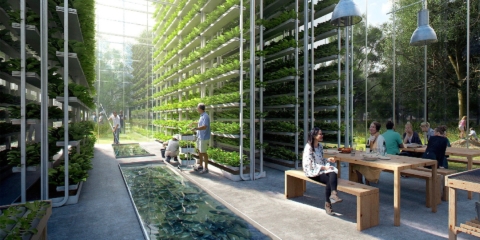Would you like to get notifications from Christian?
Generative AI has made headlines once again with the launch of new image tools that help restaurants create mouth-watering photos of their dishes for digital menus. This new development has sent shock waves through the photography industry, leaving some worried about the future of their profession, while others see it as an opportunity to innovate and improve their craft.
On the one hand, generative AI threatens the photography industry by making it easier for non-professionals to create high-quality images. This can be seen as a threat to photographers who have invested time and money in their education, equipment, and training and to companies that specialize in food photography. With the rise of AI-generated images, restaurants can now avoid the expense and hassle of hiring professional photographers and instead rely on AI to create compelling images that drive sales.
Moreover, this technology could mislead customers if the AI-generated images do not accurately represent the dishes. Although companies like DoorDash have stringent guidelines for images displayed on their platforms, there is still a possibility that AI-generated images might mislead customers into ordering words that do not live up to the photos.

On the other hand, generative AI is also an opportunity for photographers and others in the industry to leverage technology to improve their skills and expand their reach. The AI-generated images can be used as a starting point for photographers to refine and enhance or use this technology to provide unique client services.
For example, photographers can use AI-generated images to create a baseline for a particular style, color scheme, or composition. This would allow them to focus on the creative aspects of their work, such as capturing unique angles, expressions, and emotions, while the AI handles the technical aspects of the images.
Furthermore, AI-generated images can help photographers expand their reach and increase their revenue streams. By partnering with startups and restaurants that use generative AI, photographers can provide custom-tailored services that combine the benefits of AI-generated images with their own unique creative vision.
In conclusion, generative AI has both threatened and created new opportunities for the photography industry, and the impact of this technology is just beginning to be felt. As AI technology continues to advance, we will likely see more disruptions in the industry, but those who are willing to adapt and leverage the technology to their advantage will find success in this changing landscape.
Author: Christian Kromme
First Appeared On: Disruptive Inspiration Daily
Christian is a futurist and trendwatcher who speaks about the impact of exponential technologies like AI on organizations, people, and talents. Christian tailors his presentations to your audience's specific industries and needs.



Our world is changing at an exponential rate! A big tidal wave of digital transformation and disruption is coming at us fast. Many organizations see this wave as a threat and experience stress, but there are also organizations that just see this wave as an opportunity.

Imagine sitting with just 10-15 fellow executives at a premier location, gaining clarity on the impact of AI on your industry while enjoying an exquisite dining experience. These are not just meetings—they are transformative moments that will shape the future of your organization



In the future, 3D printing and generative design will allow for products to be designed in a more decentralized manner, and production will take place closer to the customer and fully on-demand. 3D printing technology will also allow for more customization and personalization of products.


The agricultural industry is ripe for disruption. Robotics, AI, and IoT are all technologies that have the potential to radically transform the way we grow food. In combination with vertical farming, these technologies could increase the efficiency and quality of agricultural products.

A human-centered society is one that puts people first and where technology is used to unite and empower people. It is a society that values biological life and dignity above all else. It is a society that recognizes the importance of human relationships and works to strengthen them. In a human-centered society, all members of the community are valued and treated with respect.


The future of healthcare is here. New technologies like AI, IoT, big data, and smart sensors make it possible to become the CEO of your own health. Imagine that your phone can listen to your voice and AI algorithms can detect small nuances in the tone of your voice that indicate specific diseases.
